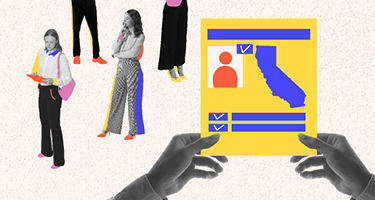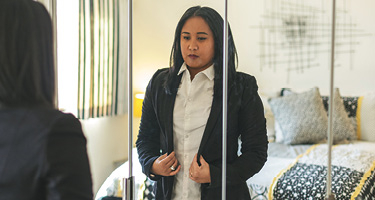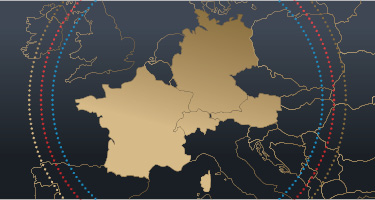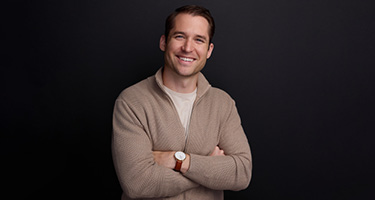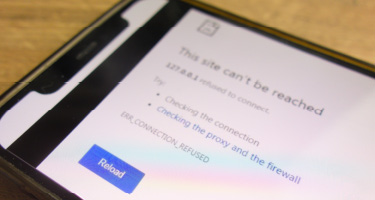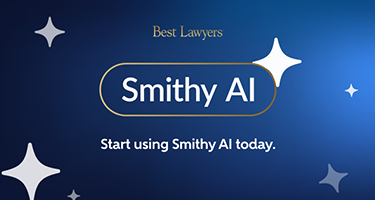This article was originally published in our 2021 Employment Law Issue.
The answer to that question—to pay or not to pay?— regarding the availability of workers’ compensation to those who may have contracted COVID-19 in the workplace is, well . . . it depends.
Cases paid without contest so far have generally been those involving medical personnel on the frontlines early in the pandemic; ICU workers; and physicians, nurses, or nursing-home aides in contact with dozens or even hundreds of COVID-19 patients for hours every day.
The larger issue, of course, concerns the many thousands of other workers who dealt with the public (and their colleagues) in mid- to late 2020 who may have contracted the coronavirus from their exposure. Are they also covered by workers’ comp?
The place to begin any such analysis is to look at the law of the jurisdiction in question. Each state has its own statutory provisions governing workers’ comp for the victims of disease, as well as programs such as the Federal Employees’ Compensation Act, Longshore and Harbor Workers’ Act, and others.
COVID-19 as an Occupational Disease
“The sickness doth infect the very lifeblood of our enterprise.”
–HENRY IV, PART I, ACT 4
Many jurisdictions distinguish between a workers’ compensation claim as the result of an injury and an occupational disease per se. One must pay attention to whether a given jurisdiction makes such a distinction, and what would qualify as an “occupational disease.” At first blush, a pandemic causing exposure in the workplace would certainly seem to qualify, and from a purely medical standpoint that might be so. Yet the term occupational disease has highly specific meanings in different jurisdictions.
Several states, such as Alabama, Florida, and Georgia, define the term generally. Many jurisdictions use the word injury to refer to work-related disease exposure; still others— Montana and Pennsylvania among them—have entirely separate statutory provisions for occupational diseases. Broadly speaking, for a disease to be considered occupational, it must be specific to a particular trade or occupation—that is, not an ordinary disease of life to which the public is equally exposed independent of employment— and a causal relationship must exist between the disease and the work.
Broadly speaking, for a disease to be considered occupational, it must be specific to a particular trade or occupation.”
In Goldberg v. 954 March Corp. (1938), the State of New York Court of Appeals defined an occupation disease as: One which results from the nature of employment, and by nature is meant, not those conditions brought about by the failure of the employer to provide a safe place to work, but conditions to which all employees of a class or subject, in which produced the disease as a natural incident of a particular occupation, and attached to that occupation, a hazard which distinguishes it from the usual run of occupations and is in excess of a hazard attending employment in general.
Statutory Exclusions or Defenses
“He shall not breathe infection in this air.”
–HENRY VI, PART II, ACT 3
One must also look at other statutory exclusions or defenses for infectious or contagious diseases. Massachusetts law holds that:
“Personal Injury” includes infectious or contagious diseases if the nature of the employment is such that the hazard of contracting such diseases by the employee is inherent in the employment.
The phrase inherent in the employment has generally been confined to health-care facilities such as hospitals, nursing homes, and physicians’ offices where staff would be exposed to patients with an array of contagious or infectious conditions. Retail cashiers, warehouse employees, assembly line workers, and office workers who might have contracted a cold, the flu, or pneumonia as a result of exposure to the public or a coworker (in a setting in which disease is not inherent in the employment) would be precluded from workers’- compensation benefits according to the Massachusetts statute.
Very few coronavirus cases have been litigated, so there is no body of available case law—or, for that matter, anecdotal evidence—regarding whether essential workers who contracted COVID-19 in 2020 might successfully argue that the risk of contracting it was “inherent in the employment.”
Burden of Proof
“Ay, to the proof, as mountains are for winds, that shakes not, though they blow perpetually.”
–TAMING OF THE SHREW, ACT 2, SCENE 1
In most jurisdictions, a claimant must establish, by a preponderance of the evidence, medical causation for a workers’-compensation claim based on a disease. An article by Rutgers Law Professor Emeritus John F. Burton Jr, “COVID-19 as an Occupational Disease: The Challenge for Workers’ Compensation,” which appeared in the January 2021 Special Edition of the Workers’ First Watch Journal, a publication of the Workers’ Injury Law & Advocacy Group (WILG), observed that the disease is highly contagious, there’s a lag between exposure and onset of symptoms, and that because an infected but asymptomatic person can spread it, the cause or source of someone’s COVID-19 infection can be difficult or impossible to determine
As in any toxic-exposure case prior to the pandemic, an argument could be successfully maintained by, first, establishing the nature and conditions of the workplace (especially the surrounding environment) and the availability of safety-data materials, air-quality measurements, and the facts of a claimant’s exposure within the workplace versus potential exposure without. Fact-gathering should also determine the availability, or lack thereof, of personal protective equipment.
The cause or source of someone’s COVID-19 infection can be difficult or impossible to determine.”
The next step is to identify and establish any preexisting conditions that might account for none, some, or all of the claimant’s complaints, together with a medical opinion that there is, more likely than not, a causal relationship between the identified toxic exposure in the workplace and the development of the disease.
COVID-19 cases will be extremely fact dependent and unique to the claimant, and inconsistent awards or decisions among various jurisdictions (or even within an individual jurisdiction) are likely given the variables of a given case and the quantum of medical evidence either to support or rebut a claim of work-related COVID-19 exposure.
Importantly, the claimants ’ standard to prevail in a workers’- comp case in most jurisdictions is to prove their case by the civil standard of a preponderance of the evidence. Any medical opinion that a causal connection between exposure and disease is more probable than not must be stated with a reasonable degree of medical certainty, but the opinion itself must hold simply that the connection is more likely than not. Again, the standards of the jurisdiction matter: Preponderance is a much easier hurdle to clear than medical certainty.
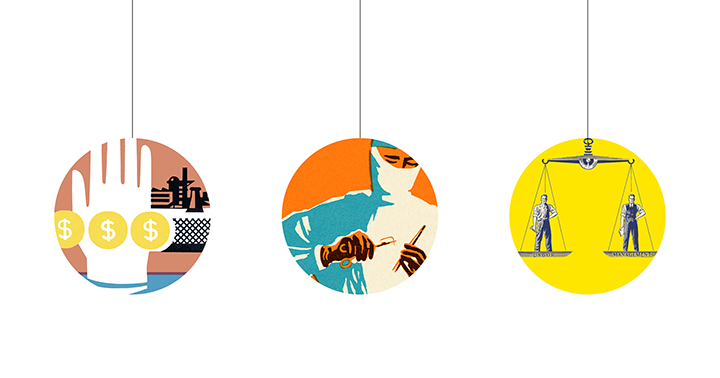
Presumptions
“Thy son I kill’d for his presumption.”
–HENRY VI, ACT 5, SCENE 6
Regarding the broad topic of the compensability of COVID-19 claims, there were efforts in many jurisdictions by legislative, executive or administrative action to enact presumptions—a well-established concept in workers’ compensation and, indeed, the law in general.
The purpose would be to establish that COVID-19 is a compensable disease. Presumptions operate as rules of evidence that call for a certain result in a case unless the other party can overcome the presumption with additional evidence. A presumption can therefore be said to shift the burden, or “production,” of evidence, or the burden of persuasion, to the party seeking to overcome the presumption.
There are both rebuttable presumptions and conclusive presumptions. Pennsylvania Judge David B. Torrey, a frequent commentator on workers’ compensation, and University of Wyoming Law School Professor Michael Duff, addressed this in the WILG article mentioned above. Judge Torrey noted that a rebuttable presumption is one that, once an insurer can produce an expert medical opinion contrary to the causation presumption—that is, medical evidence showing that COVID-19 was not work related—the presumption would simply disappear, a scenario some have referred to as the “bursting bubble.” This doesn’t mean that the employee would perforce lose the case, but the burden of production would shift back to the claimant, who would then have to satisfy the same criteria as if no rebuttal presumption existed to begin with.
Duff explains that a more useful presumption for claimants would be one that creates positive evidence of causation; the burden of proving the work did not cause the disease would then shift to the employer. The most familiar source of presumptions to workers’-comp practitioners prior to COVID-19 were cancer presumptions regarding firefighters.
Professor Arthur Larson, in his treatise Law of Workers’ Compensation (Mathew Bender: 1952), notes that in connection with the firefighter disease presumptions, one must measure how much evidence would be required to rebut or overcome the presumption, adding that “the possible grounds for rebutting the presumption varies so widely that the end product varies from a virtually irrebuttable to a virtually worthless presumption.”
The burden of proving the work did not cause the disease would then shift to the employer.”
At the time of this article, the following states had created presumptions of compensability by administrative action or executive order: Connecticut, Florida, Kentucky, Michigan, Missouri, New Hampshire, and North Dakota. States that have adopted presumptions via legislation are Alaska, California, Illinois, Minnesota, New Jersey, Utah, Vermont, Wisconsin, and Wyoming. The question is to whom these presumptions apply. For the most part, they seem to apply to first responders and other medical personnel. Some states have extended coverage to funeral directors and funeral home workers, police officers and the like.
Establishing Causation
“Find out the cause of this effect.”
–HAMLET, ACT 2, SCENE 2
The general approach for connecting COVID-19 exposure to work would be similar to that of categorizing any occupational disease as a work-related condition. The first step would be to establish the diagnosis, which would also include the timeline from the point of workplace exposure to the onset of symptoms (with COVID-19, anywhere from three days to two weeks). The physician would then try to document the intensity and duration of the work[1]related exposure, comparing it to a potential non-workplace exposure. The length and dose of exposure are connected; the dose concerns the degree to which the exposed person has inhaled, or ingested a given toxic agent.
Once a diagnosis is made and a timeline determined, an assessment of workplace risk should follow. One would look to the worker ’s contact with any potential infectious sources—the general public, patients, customers, or coworkers—as well as ascertain where clusters or outbreaks have been reported in scientific literature or by municipal, county, or state health agencies. (Clusters or outbreaks in particular workplaces are important as well.) Many state agencies—as well as the federal government, through OSHA—may require reporting of COVID-19 cases among employees to the relevant state or federal departments.
Next comes an assessment of specific work practices in the 14-day period that preceded an onset of symptoms or the diagnosis. How physically close was a patient or claimant to others during work? How often during a normal workday might the individual have been within six feet of others, and how long did those interactions last? One should assess the non-workplace risk for the two weeks prior to the onset of symptoms or the diagnosis as well. When all this is complete, a qualified medical expert must determine the relative importance of workplace and non-workplace risks and exposures, comparing the two carefully.
Conclusion
“All’s well that ends well.”
One hopes it all ends well, at any rate. Whether a healthy system of workers’ compensation among the states, with or without presumptions, is adequate to deal with the unique qualities of the COVID-19 pandemic remains an open question and will likely be the subject of a welter of scholarly medical and legal papers going forward. Our collective experience will, ideally, enable society more broadly and workers’-comp systems in particular to be better prepared to deal with the economic consequences of potential work-related pandemic exposure in the years ahead.
Alan Pierce practices Workers’ Compensation law at the firm Pierce, Pierce & Napolitano in Salem, Massachusetts, where their practice concentrates on the representation of injured workers and their families. Alan is past president of both the Massachusetts Academy of Trial Attorneys and the national Workers Law and Advocacy Group (WILG) from whom he will receive their Lifetime Achievement Award in 2021. He is a Fellow of the College of Workers’ Compensation Lawyers and has recently been elected as its Vice President. He is a member of the National Academy of Social Insurance and has been a featured speaker or panelist at over 150 seminars and legal education programs. Since 2005, his podcast Workers’ Comp Matters on the Legal Talk Network has produced over 100 programs on various workers’ compensation topics. He is Executive Editor of Workers First Watch and a former editor and columnist for the Journal of Workers’ Compensation. He has been recognized as a “Lawyer of the Year” in Workers’ Compensation Law – Claimants in Massachusetts by Best Lawyers® for 2016, 2019, and 2021.


